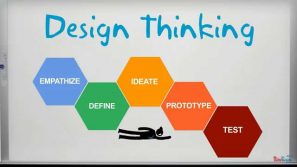
Your mission this week is to Design the Life You Really Want.
Dave Evans
This activity is based on Dave Evans talk Designing the life you really want. Here’s Dave Evans’ talk in your choice of video, audio, or text transcript.
Video
Audio
Text
- Dave_Evans-Designing-Life (PDF of talk transcript)
3 Possible Future Me’s
Think of 3 possible futures for yourself. You might brainstorm a list of many futures, and pick 3 to talk about. 3 possibilities are:
- The thing you currently think you’ll be doing with your life
- The thing you would do if the current thing disappeared tomorrow
- The thing you would do if you were financially secure, and no one would ever laugh, go ahead, what would it be?
There are many other ways to generate 3 of your possible futures, but those are a pretty good start.
Describe
Write a paragraph or more for each of your 3 possible futures. Think about how you would achieve this life and describing what your life in this future would be like. Try to make a 5-year plan for each possible life. Here are some sample charts you might like to make:
Evaluate
For these scales, give a rating to each of your possible futures:
- Confidence
- Resources
- Impact
- Satisfaction
Rapid Prototyping
The term rapid prototyping is probably most often thought of in terms of designing hardware or software. If you want to design a new phone or other device, you might start by carving a simple piece of foam and marking a few buttons on it. You might carry it around yourself, or ask others to try it, and see how it feels and functions. The key to good rapid prototyping is that it’s fast, cheap, and tells you something useful.
We can also rapid prototype our future lives.
- Interviews – whatever your future dream might be, someone is living it right now. Shake the tree. Surf the net. Network. Find someone who’s doing what you’d like to do and ask them to tell you about their life. Don’t be afraid – people love to talk about their lives! You might not have time to do Life Interviews for all 3 of your choices, but try to do at least one!
- LinkedIn – if you don’t already have a LinkedIn account, make one. Search for careers you’re interested in, like “Tattoo Artist,” “Frontend Developer,” or “Adventure Journalist.” If you’ve got 100 or 200 LI contacts then you probably know someone who knows someone that does what you’re thinking about. See if they can introduce you.
- Practice – in the spirit of foam prototypes of high tech phones, do the best approximation of your future life that you can. If it’s grad school, or teaching at a university, you can sit in classes, or work in a campus lab, or lead a class. If it’s to be a tattoo artist and you aren’t yet skilled in that, you could still find a way to practice that with friends and non-permanent materials. If it’s nursing you might spend some time in a real hospital, or simulate the activities for a few hours in a dorm room scenario. Find a fast, easy, and informative way to practice your future life.
Blog It
Now just write it all up. Do a post describing your 3 possible future lives. Present the results of your Scale Evaluations and your Rapid Prototype experiences. Draw whatever conclusions feel appropriate.



